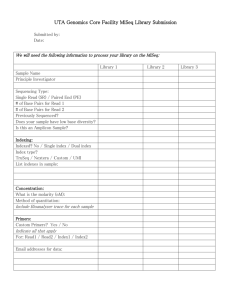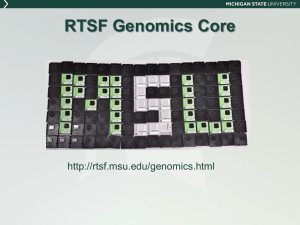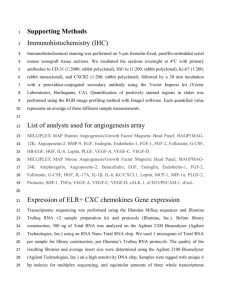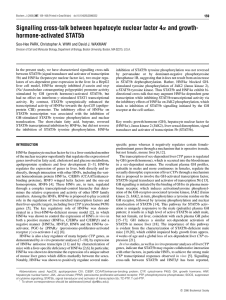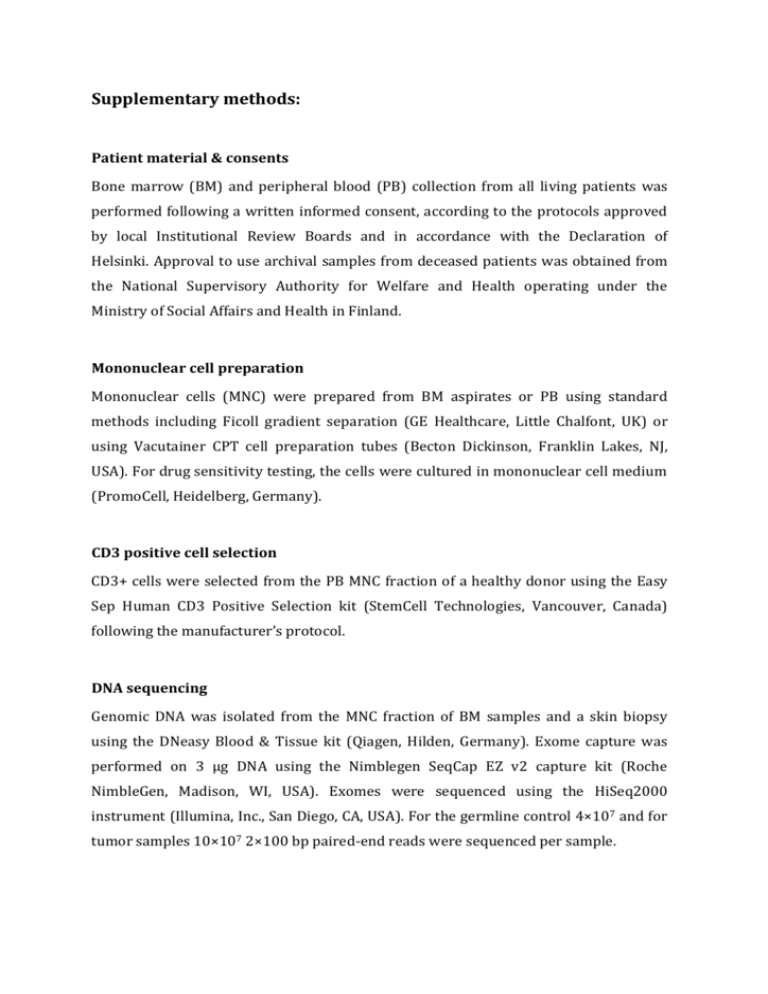
Supplementary methods:
Patient material & consents
Bone marrow (BM) and peripheral blood (PB) collection from all living patients was
performed following a written informed consent, according to the protocols approved
by local Institutional Review Boards and in accordance with the Declaration of
Helsinki. Approval to use archival samples from deceased patients was obtained from
the National Supervisory Authority for Welfare and Health operating under the
Ministry of Social Affairs and Health in Finland.
Mononuclear cell preparation
Mononuclear cells (MNC) were prepared from BM aspirates or PB using standard
methods including Ficoll gradient separation (GE Healthcare, Little Chalfont, UK) or
using Vacutainer CPT cell preparation tubes (Becton Dickinson, Franklin Lakes, NJ,
USA). For drug sensitivity testing, the cells were cultured in mononuclear cell medium
(PromoCell, Heidelberg, Germany).
CD3 positive cell selection
CD3+ cells were selected from the PB MNC fraction of a healthy donor using the Easy
Sep Human CD3 Positive Selection kit (StemCell Technologies, Vancouver, Canada)
following the manufacturer’s protocol.
DNA sequencing
Genomic DNA was isolated from the MNC fraction of BM samples and a skin biopsy
using the DNeasy Blood & Tissue kit (Qiagen, Hilden, Germany). Exome capture was
performed on 3 μg DNA using the Nimblegen SeqCap EZ v2 capture kit (Roche
NimbleGen, Madison, WI, USA). Exomes were sequenced using the HiSeq2000
instrument (Illumina, Inc., San Diego, CA, USA). For the germline control 4×107 and for
tumor samples 10×107 2×100 bp paired-end reads were sequenced per sample.
Somatic mutation calling and annotation from exome sequencing data
Sequence reads were processed and aligned to GRCh37.66 reference genome primary
assembly as described previously1,2. Somatic mutation calls were made for exome
capture target regions of the NimbleGen SeqCap EZ v2 capture kit (Roche NimbleGen,
Madison, WI, USA) and the flanking 500 bps. High confidence somatic mutations were
called for each tumor sample using the VarScan2 somatic algorithm3 with the following
parameters: strand-filter 1, min-coverage-normal 8, min-coverage-tumor 6, somatic-pvalue 0.01, normal-purity 1, min-var-freq 0.20.
Mutations were annotated with SnpEff4 using the Ensembl v68 annotation database. To
filter out misclassified germline variants, population variants included in dbSNP
version 130 were removed. Remaining non-synonymous mutations were visually
validated using the Integrated Genomics Viewer (Broad Institute).
Library preparation, sequencing and data analysis of transcriptomes
5 µg of total RNA was used for depletion of ribosomal RNA (Ribo-Zero™ rRNA Removal
Kit, Epicentre, Madison, WI, USA) and reverse transcribed to double-stranded cDNA
(NEBNext® mRNA Library Prep Master Mix Set 1, New England BioLabs, Ipswich, MA,
USA). Random hexamers (New England BioLabs) were used for priming the first
strand synthesis reaction and SPRI beads (Agencourt AMPure XP, Beckman Coulter,
Brea, CA, USA) for purification of ribodepleted RNA and cDNA.
RNAseq libraries were prepared using Illumina compatible Nextera™ Technology
(Illumina, Inc., San Diego, CA, USA) and 60 ng of cDNA. In this technology DNA
fragmentation and tagging is performed by in vitro cut-and-paste transposition. After
the tagmentation reaction the fragmented cDNA was purified with SPRI beads. The
RNAseq libraries were amplified according to the manufacturer´s instructions and size
selected (350-700 bp) with the Caliper LabChip XT Instrument (PerkinElmer,
Waltham, MA, USA). Each transcriptome was loaded to occupy 1/3 of the lane capacity
in the flow cell. C-Bot (TruSeq PE Cluster Kit v3, Illumina) was used for cluster
generation and Illumina HiSeq2000 platform (TruSeq SBS Kit v3-HS reagent kit,
Illumina) for paired end sequencing with 93 bp read length. RNAseq data analysis, such
as fusion gene identification, mutation calling and gene expression quantitation
(Tophat and Cufflinks) was done as described previously. 5
The STAT5B haplotype of the index patient’s relapse sample regarding mutations
N642H, T648S, I704L was reconstructed by extracting from Tophat alignment the pairs
(38 in total) properly aligned and overlapping with the affected exons
(ENSE00002394532 and ENSE00001118418). The pairs supporting each of the
possible haplotypes were counted manually using the Integrated Genomics Viewer
(Broad Institute). Pairs supporting the triple mutation (N642H, T648S, I704L) = 23;
pairs supporting triple wt = 15, pairs supporting other combinations = 0.
Targeted PCR amplification and amplicon sequencing
Sample preparation was performed according to an in-house targeted PCR
amplification protocol. Each amplicon was generated using locus specific PCR primers
carrying Illumina compatible adapter sequences (primer sequences in Table 1). All
oligonucleotides were synthesized by Sigma-Aldrich (St. Louis, MO, USA). The PCR
reaction was performed in a volume of 20 µl containing 5-10 ng of sample DNA, 10 µl of
2x Phusion High-Fidelity PCR Master Mix (Thermo Scientific Inc., Waltham, MA, USA),
0.025 or 0.05 µM of each locus specific primers, 0.5 or 0.375 µM of an adapter primer
carrying Illumina grafting P7 sequence, 0.5 or 0.375 µM of an adapter primer carrying
Illumina grafting P5 sequence (primer sequences in Table 2)** and the reaction mix
was brought to a final volume with water (Sigma-Aldrich, St. Louis, MO, USA). Samples
were cycled according to Phusion High-Fidelity PCR Master Mix cycling instructions
(annealing temperature 59 °C). Following PCR amplification, samples were purified
using Performa® V3 96-Well Short Plate (EdgeBio, Gaithersburg, MD, USA) and
QuickStep™2 SOPE™ Resin (EdgeBio, Gaithersburg, MD, USA) or with Agencourt®
AMPure® XP beads (Beckman Coulter Inc., Beverly, MA, USA) and then pooled together
without exact quantification. Purified sample pools were analyzed on Agilent 2100
Bioanalyzer (Agilent Technologies Inc., Santa Clara, CA, USA) to quantify amplification
performance and yield. Sequencing of PCR amplicons was performed using the
Illumina MiSeq instrument with MiSeq Control Software v2.2.29 or later versions
(Illumina, Inc., San Diego, CA, USA). Samples were sequenced as 151 or 251 bp pairedend reads and two 8 bp index reads. Data obtained from sequencing were processed
with an in-house amplicon pipeline.
STAT5B mutations were validated from the index patient with capillary sequencing as
described previously7.
STAT5B mutagenesis
An expression plasmid pCMV6-XL6 containing the wild-type coding sequence of
STAT5B (OriGene, Rockville, MD, USA) was modified to include the N642H, T648S and
I704L mutations. After generating the single mutated constructs the double
(N642H+T648S, N642H+I704L, T648S+I704L) and triple (N642H+T648S+I704L)
mutated constructs were prepared. The mutant constructs were created using the
GENEART Site-Directed Mutagenesis System (Life Technologies, Carlsbad, CA, USA)
according to the manufacturer’s protocol. The primer sequences used for the
mutagenesis are listed in Table 3. The entire STAT5B cDNA sequence with mutations
was confirmed by capillary sequencing (primer sequences in Table 4).
Cell culture and transfection
HeLa cells were cultured in high glucose DMEM (Life Technologies, Carlsbad, CA, USA)
containing 10% FBS, 2mM L-glutamine, 100 U/ml penicillin and 100 μg/ml
streptomycin. For transfection, HeLa cells were plated in 6-well plates (400 000
cells/well) for Western blot analysis and in 96-well plates (15 000 cells/well) for the
STAT5B reporter assay one day before the transfection. Transfection was carried out
with STAT5B expression plasmids mixed with the luciferase reporter plasmid pGL4.52
(Luc2P/STAT5RE/Hygro, Promega, Madison, WI, USA) using Fugene HD transfection
reagent (Promega); Fugene HD:DNA ratio 3.5:1. A master mix was prepared with each
mutant construct + luciferase plasmid and appropriate amounts were added to each
well; 6-well plate 3μg + 1μg and 96-well plate 0.1μg + 0.033μg.
Western blot analysis
One day after transfection the HeLa cells were lysed in RIPA buffer (0.1% SDS, 150mM
NaCl, Tris 50mM, 1% Triton-X100, 0.5% sodium deoxycholate) containing 1mM
sodium orthovanadate and Roche's Complete Protease Inhibitor Cocktail Tablet.
Lysates were then sonicated for 4×1s and after addition of 2×Laemmli buffer, 50 μg of
protein was loaded per sample to 10% SDS-PAGE gels. Detection of phopho-STAT5 and
total STAT5 was done using two separate gels run in parallel with the same protein
lysates. The proteins were transferred to nitrocellulose membranes (Bio-Rad, Hercules,
CA, USA), after which the membranes were blocked with 5% bovine serum albumin
(BSA) for 1 hour. Primary antibodies for STAT5 were obtained from Cell Signaling
Technology (Cell Signaling Technology, Danvers, MA, US): STAT5 (rabbit polyclonal
antibody, cat. 9363) dilution 1:1000 and phospho-STAT5 (Tyr694/699, rabbit mAb,
cat. 9359) dilution 1:1000. Anti-α-Tubulin was obtained from Sigma Aldrich (T9026
mouse mAb) dilution 1:500. Membranes were incubated with primary antibodies
diluted in phosphate-buffered saline and 0.1% Tween 20 (PBS-T) + 5% BSA 1h at room
temperature (RT). The membranes were then incubated with a secondary infrared
antibodies: goat anti-rabbit IRDye 800CW and donkey anti-mouse IRDye 800CW (LICOR Biosciences, Lincoln, NE, USA) diluted 1:15 000 in 5% BSA PBS-T for 1 hour at RT.
The proteins were visualized with the Odyssey imaging system (LI-COR Biosciences)
and its application software version 3.0 was used to quantify band intensity levels.
STAT5B reporter assay
After 24 h incubation at 37 °C, transfected HeLa cells were lysed and luciferase activity
was assessed using the One-Glo luciferase detection reagent (Promega, Madison, WI,
USA). The assay was repeated 3 times and the mean fold change in transcriptional
activity induced by the different mutant constructs compared to the activity of the WT
STAT5B construct was calculated (±SD).
qRT-PCR
Total RNA was prepared from peripheral blood CD3+ cells from a healthy donor and
from BM MNCs of the index patient and two T-ALL controls using the miRNeasy Mini
Kit (Qiagen, Hilden, Germany) according to the manufacturer’s instructions. cDNA was
prepared from 224 ng of total RNA using SuperScript III reverse transcriptase and
random primers (Life Technologies, Carlsbad, CA, USA) in a 20 μl reaction, including 40
U RiboLock RNase inhibitor (Thermo Scientific, Waltham, MA, USA). For primer
efficiency reactions, 5 μg of the index patient RNA was used in the reverse
transcription reaction. Primer efficiencies were determined using ten fold dilutions of
RNA: 125 ng, 12.5 ng, 1.25 ng, 0.125 ng per reaction. Reference genes were chosen
based on uniform expression in all samples with POLR1B and GUSB determined to be
the best reference candidates. qPCR was performed for 4 target transcripts: BCL2, BCLXL, BCL-XS and MCL. Primer sequences are listed in Table 5. BCL-XL and BCL-XS are
alternative transcripts of the BCL2L1 gene, so the primers were designed to be
transcript specific. Other targets were non-specific for transcript variants. qPCR
reactions were performed using iQ SYBR Green Supermix (Bio Rad, Hercules, CA, USA),
and the specificities of the amplification products verified by melting curve analysis.
Gene expression was quantified using the Pfaffl method based on calculated primer
efficiencies.6
Protein structure analysis
The human STAT5B dimer homology model was prepared as described previously.7
Protein structure visualization was prepared with Swiss PDB viewer.8
Table 1. Locus specific primer sequences carrying tails corresponding to the Illumina adapter sequences. Locus specific
primer sequences are underlined.**
Primer name
Primer sequence
STAT3_exon21-F
5’-ACACTCTTTCCCTACACGACGCTCTTCCGATCTCCCAAAAATTAAATGCCAGGA-3’
STAT3_exon21-R
5’-AGACGTGTGCTCTTCCGATCTGGTTCCATGATCTTTCCTTCC-3’
STAT5A_exon17-F
5’-ACACTCTTTCCCTACACGACGCTCTTCCGATCTTCCTGCTGCTGGTGGATTAT-3’
STAT5A_exon17-R
5’-AGACGTGTGCTCTTCCGATCTAGCCCAAGGCTTTGTCTATG-3’
STAT5B_exon14-15-F
5’-ACACTCTTTCCCTACACGACGCTCTTCCGATCTCTGACCTCAACAAATAGTAAGTACCC-3’
STAT5B_exon14-15-R
5’-AGACGTGTGCTCTTCCGATCTTTCCAAGTGTTACTCTGGTGTTC-3’
STAT5B_exon16-F
5’-ACACTCTTTCCCTACACGACGCTCTTCCGATCTTGTTGGGGTTTTAAGATTTCC-3’
STAT5B_exon16-R
5’-AGACGTGTGCTCTTCCGATCTCAAATCAGAATGCGAACATTG-3’
STAT5B_exon17-F
5’-ACACTCTTTCCCTACACGACGCTCTTCCGATCTCCCAGGGCTGAGACAGTTT-3’
STAT5B_exon17-R
5’-AGACGTGTGCTCTTCCGATCTAGATTGCACCACCGTACTCC-3’
STAT5B_exon18-F
5’-ACACTCTTTCCCTACACGACGCTCTTCCGATCTTGGATTCCTTTGACCCCAGC-3’
STAT5B_exon18-R
5’-AGACGTGTGCTCTTCCGATCTAGATACCCCTTGGTCCCCTC-3’
STAT5B_exon19-F
5’-ACACTCTTTCCCTACACGACGCTCTTCCGATCTCTGGTGGCCTGTGGGGCTTG-3’
STAT5B_exon19-R
5’-AGACGTGTGCTCTTCCGATCTTCTGTCTGTGGCCCCTCTGCT-3’
Table 2. Adapter primer sequences carrying P7/P5 grafting sequences. TruSeq Adapter index primers are adapted from
Illumina and contain the P7 grafting sequence. FIMM P5 index primers partly contain Illumina indices and carry the P5
grafting sequence. Index sequences are underlined. **
Primer name
Primer sequence
TruSeq Adapter
5'-CAAGCAGAAGACGGCATACGAGATTGGTCAGTGACTGGAGTTCAGACGTGTGCTCTTCCGATC*T-3'
index 4
TruSeq Adapter
5'-CAAGCAGAAGACGGCATACGAGATCACTGTGTGACTGGAGTTCAGACGTGTGCTCTTCCGATC*T-3'
index 5
TruSeq Adapter
5'-CAAGCAGAAGACGGCATACGAGATATTGGCGTGACTGGAGTTCAGACGTGTGCTCTTCCGATC*T-3'
index 6
TruSeq Adapter
5'-CAAGCAGAAGACGGCATACGAGATGATCTGGTGACTGGAGTTCAGACGTGTGCTCTTCCGATC*T-3'
index 7
TruSeq Adapter
5'-CAAGCAGAAGACGGCATACGAGATTCAAGTGTGACTGGAGTTCAGACGTGTGCTCTTCCGATC*T-3'
index 8
TruSeq Adapter
5'-CAAGCAGAAGACGGCATACGAGATCTGATCGTGACTGGAGTTCAGACGTGTGCTCTTCCGATC*T-3'
index 9
TruSeq Adapter
5'-CAAGCAGAAGACGGCATACGAGATAAGCTAGTGACTGGAGTTCAGACGTGTGCTCTTCCGATC*T-3'
index 10
TruSeq Adapter
5'-CAAGCAGAAGACGGCATACGAGATGTAGCCGTGACTGGAGTTCAGACGTGTGCTCTTCCGATC*T-3'
index 11
TruSeq Adapter
5'-CAAGCAGAAGACGGCATACGAGATTACAAGGTGACTGGAGTTCAGACGTGTGCTCTTCCGATC*T-3'
index 12
TruSeq Adapter
index 13
5'-CAAGCAGAAGACGGCATACGAGATTTGACTGTGACTGGAGTTCAGACGTGTGCTCTTCCGATC*T-3'
TruSeq Adapter
5'-CAAGCAGAAGACGGCATACGAGATGGAACTGTGACTGGAGTTCAGACGTGTGCTCTTCCGATC*T-3'
index 14
TruSeq Adapter
5'-CAAGCAGAAGACGGCATACGAGATTGACATGTGACTGGAGTTCAGACGTGTGCTCTTCCGATC*T-3'
index 15
TruSeq Adapter
5'-CAAGCAGAAGACGGCATACGAGATCTCTACGTGACTGGAGTTCAGACGTGTGCTCTTCCGATC*T-3'
index 17
TruSeq Adapter
5'-CAAGCAGAAGACGGCATACGAGATGCGGACGTGACTGGAGTTCAGACGTGTGCTCTTCCGATC*T-3'
index 18
TruSeq Adapter
5'-CAAGCAGAAGACGGCATACGAGATTTTCACGTGACTGGAGTTCAGACGTGTGCTCTTCCGATC*T-3'
index 19
TruSeq Adapter
5'-CAAGCAGAAGACGGCATACGAGATCGAAACGTGACTGGAGTTCAGACGTGTGCTCTTCCGATC*T-3'
index 21
TruSeq Adapter
5'-CAAGCAGAAGACGGCATACGAGATGTATAGGTGACTGGAGTTCAGACGTGTGCTCTTCCGATC*T-3'
index 27
TruSeq Adapter
5'-CAAGCAGAAGACGGCATACGAGATCGATTAGTGACTGGAGTTCAGACGTGTGCTCTTCCGATC*T-3'
index 30
TruSeq Adapter
5'-CAAGCAGAAGACGGCATACGAGATGCTGTAGTGACTGGAGTTCAGACGTGTGCTCTTCCGATC*T-3'
index 31
TruSeq Adapter
5'-CAAGCAGAAGACGGCATACGAGATATTATAGTGACTGGAGTTCAGACGTGTGCTCTTCCGATC*T-3'
index 32
TruSeq Adapter
5'-CAAGCAGAAGACGGCATACGAGATGAATGAGTGACTGGAGTTCAGACGTGTGCTCTTCCGATC*T-3'
index 33
TruSeq Adapter
5'-CAAGCAGAAGACGGCATACGAGATCTTCGAGTGACTGGAGTTCAGACGTGTGCTCTTCCGATC*T-3'
index 35
FIMM P5 index
5’-AATGATACGGCGACCACCGAGATCTACACAGTTGGTACACTCTTTCCCTACACGACGCTCTTCCGATC*T-3’
9
FIMM P5 index
5’-AATGATACGGCGACCACCGAGATCTACACGTACCGGACACTCTTTCCCTACACGACGCTCTTCCGATC*T-3’
10
FIMM P5 index
5’-AATGATACGGCGACCACCGAGATCTACACCGGAGTTACACTCTTTCCCTACACGACGCTCTTCCGATC*T-3’
11
FIMM P5 index
5’-AATGATACGGCGACCACCGAGATCTACACTGAACCTTACACTCTTTCCCTACACGACGCTCTTCCGATC*T-3’
14
FIMM P5 index
5’-AATGATACGGCGACCACCGAGATCTACACTGCTAAGTACACTCTTTCCCTACACGACGCTCTTCCGATC*T-3’
15
FIMM P5 index
5’-AATGATACGGCGACCACCGAGATCTACACTGTTCTCTACACTCTTTCCCTACACGACGCTCTTCCGATC*T-3’
16
FIMM P5 index
5’-AATGATACGGCGACCACCGAGATCTACACTAAGACACACACTCTTTCCCTACACGACGCTCTTCCGATC*T-3’
17
FIMM P5 index
5’-AATGATACGGCGACCACCGAGATCTACACCTAATCGAACACTCTTTCCCTACACGACGCTCTTCCGATC*T-3’
18
FIMM P5 index
5-‘AATGATACGGCGACCACCGAGATCTACACCTAGAACAACACTCTTTCCCTACACGACGCTCTTCCGATC*T-3’
19
FIMM P5 index
5’-AATGATACGGCGACCACCGAGATCTACACTAAGTTCCACACTCTTTCCCTACACGACGCTCTTCCGATC*T-3’
20
FIMM P5 index
5’-AATGATACGGCGACCACCGAGATCTACACTAGACCTAACACTCTTTCCCTACACGACGCTCTTCCGATC*T-3’
21
* denotes a phosphorothioate-modified bond
**Oligonucleotide sequences © 2007-2012 Illumina, Inc. All rights reserved. Derivative works created by Illumina customers are
authorized for use with Illumina instruments and products only. All other uses are strictly prohibited
Table 3: STAT5B mutagenesis primers
N642H:
F: 5'- GAA AGA ATG TTT TGG CAT CTG ATG CCT TTT AC -3'
R: 5'- GTA AAA GGC ATC AGA TGC CAA AAC ATT CTT TC -3'
T648S:
F: 5'- CTG ATG CCT TTT ACC TCC AGA GAC TTC TCC -3'
R: 5'- GGA GAA GTC TCT GGA GGT AAA AGG CAT CAG -3'
I704L:
F: 5'- CGT GAA GCC ACA GCT CAA GCA AGT GGT CCC -3'
R: 5'- GGG ACC ACT TGC TTG AGC TGT GGC TTC ACG -3'
Table 4: Sequencing primers of the STAT5B constructs
F_1:
GGACTTTCCAAAATGTCG
F_2:
GAACAGAGGTTGGTCCGAGA
F_3:
GAACACCCGCAATGATTACA
F_4:
CAACAGGCCCATGACCTACT
R_1:
CCACCAGCCTTGTCCTAAT
Table 5: Primer sequences for qPCR
POLR1B:
GCATACCCCAGACGGGGAGC
TCGGTGGGGAGCTCCATCAAT
GUSB:
TGGAGCTTCCGCGCCGACTT
GCATGTCCACGGTGGGGCCT
BCL2:
AGATTGATGGGATCGTTGCCT
AGTCTACTTCCTCTGTGATGTTGT
bcl-xL:
ATTGGTGAGTCGGATCGCAG
GCTGCTGCATTGTTCCCATAG
bcl-xS:
TCCCCATGGCAGCAGTAAAG
TCCACAAAAGTATCCTGTTCAAAGC
MCL1:
TTTGGCACTGTGAAACCCCT
GTGTCACAGCACCCATGGTA
References:
1.
Koskela HL, Eldfors S, Ellonen P, van Adrichem AJ, Kuusanmaki H, Andersson EI,
et al. Somatic STAT3 mutations in large granular lymphocytic leukemia. N Engl J
Med 2012; 366(20): 1905-1913.
2.
Sulonen AM, Ellonen P, Almusa H, Lepisto M, Eldfors S, Hannula S, et al.
Comparison of solution-based exome capture methods for next generation
sequencing. Genome Biol 2011; 12(9): R94.
3.
Koboldt DC, Zhang Q, Larson DE, Shen D, McLellan MD, Lin L, et al. VarScan 2:
somatic mutation and copy number alteration discovery in cancer by exome
sequencing. Genome Res 2012; 22(3): 568-576.
4.
Cingolani P, Platts A, Wang le L, Coon M, Nguyen T, Wang L, et al. A program for
annotating and predicting the effects of single nucleotide polymorphisms,
SnpEff: SNPs in the genome of Drosophila melanogaster strain w1118; iso-2;
iso-3. Fly 2012; 6(2): 80-92.
5.
Edgren H, Murumagi A, Kangaspeska S, Nicorici D, Hongisto V, Kleivi K, et al.
Identification of fusion genes in breast cancer by paired-end RNA-sequencing.
Genome Biol 2011; 12(1): R6.
6.
Pfaffl MW. A new mathematical model for relative quantification in real-time
RT-PCR. Nucleic Acids Res 2001; 29(9): e45.
7.
Rajala HL, Eldfors S, Kuusanmäki H, van Adrichem AJ, Olson T, Lagström S, et al.
Discovery of somatic STAT5b mutations in large granular lymphocytic leukemia.
Blood 2013;121(22):4541-50.
8.
Guex N, Peitsch MC. SWISS-MODEL and the Swiss-PdbViewer: an environment
for comparative protein modeling. Electrophoresis 1997; 18(15):2714-23.

